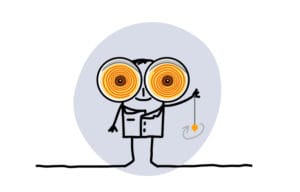
Hypnosis Therapy is an ancestral and natural technique with multiple indications. The different types of hypnosis are often confused. Many of us have seen movie scenes showing hypnosis or street hypnosis, which is quite different from what is practiced in the therapist’s office.
On a scientific level, hypnosis is still quite mysterious. It is objectified in medical imaging, but the results obtained are inconsistent. Some people are more responsive than others while some are completely resistant to it. A form of letting go is necessary for hypnosis to work. During a session, distrustful, defensive people generally do not feel the hypnotic trance.
What is hypnosis?
One hypothesis says that hypnosis is the mental state in which we spontaneously found ourselves when we were children and that we did not possess articulated language, before speech. Hypnosis involves cutting off reflection and critical judgment. Hypnosis is generally initiated by focusing the subject’s perception on a sensory aspect such as a point (the view), a noise (the hearing), a physical sensation (the kinesthesia). This disturbs the focus of perception, attention processes and induces the hypnotic state. For example, we spontaneously put ourselves in a hypnotic state when we are absorbed by certain non-cognitive tasks. People who do crochet, painting, sculpting, gardening sometimes put themselves into hypnosis by indulging in their hobby. This is one of the reasons for the well-being and pleasure they feel when they are in contact with this activity, while at the same time having the sensation of emptying their mind. We find that creativity can be stimulated under hypnosis. The painter or the sculptor will say that he does not know what he is doing, but the result can be very creative, very expressive and unique. The critical mind functioning in the background, it is then obvious that other unconscious, hidden resources become accessible and mobilizable. Reason and critical thinking do not always help. That is a euphemism in psychopathology. It is on this path that the therapist and his patient will walk in order to stimulate the creative, healing spirit of the patient.
Within the framework of psychotherapy, the therapist will try to modify his patient by plunging him into a hypnotic trance and work with him on a given psychological problem. This can be done alone or as a complement to other psychotherapy techniques such as cognitive and behavioral therapy (CBT). The indications are numerous: pain, anxiety, depression, smoking cessation, overweight, insomnia, diffuse states of uneasiness.
Liens amis
Bibliographie




